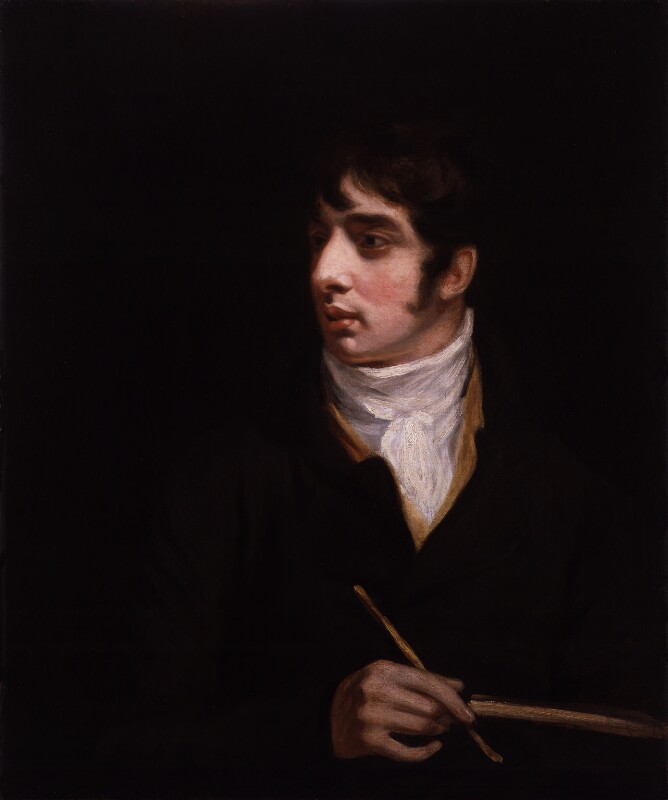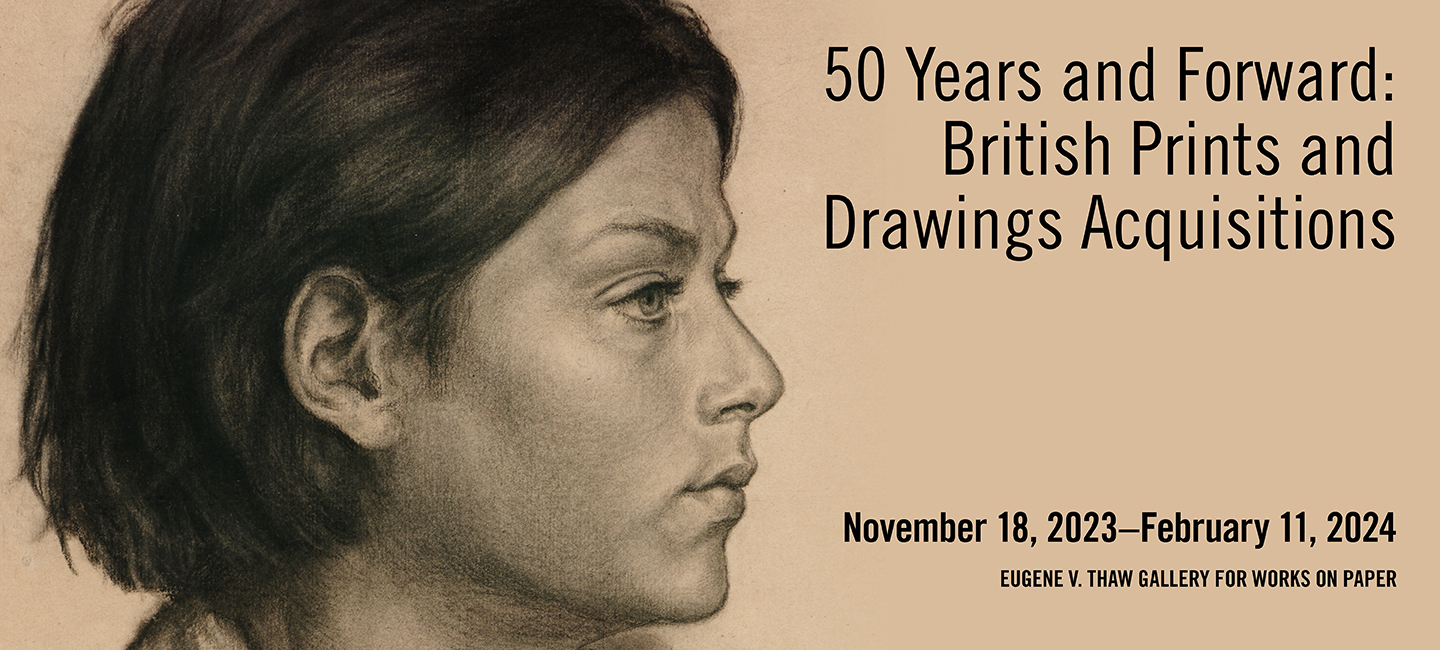Artist Biographies
Thomas Rowlandson
English, 1757–1827
 George Henry Harlow (English, 1787–1819), Thomas Rowlandson, 1814. Graphite heightened in red chalk, 9 ¼ x 7 ¾ in. (23.5 x 19.7 cm). National Portrait Gallery, London, NPG 2813
George Henry Harlow (English, 1787–1819), Thomas Rowlandson, 1814. Graphite heightened in red chalk, 9 ¼ x 7 ¾ in. (23.5 x 19.7 cm). National Portrait Gallery, London, NPG 2813Image released under Creative Commons CC-BY-NC-ND
(3.0 Unported)
A prolific artist and printmaker, Thomas Rowlandson was one of the most accomplished English professional draughtsmen of the Georgian era. Best known for his witty observations on English politics and society, Rowlandson created satirical works and caricatures that offer comedic takes on common social types of his day. His figures are characterized by elaborate coiffures, highly ornamental dress, and overly exaggerated attributes. Despite their humorous intent, Rowlandson’s drawings constitute some of the finest examples of pen-and-wash technique in
British art.
Thomas Girtin
English, 1775–1802
 John Opie (English, 1761–1807), Thomas Girtin, c. 1800. Oil on canvas, 30 x 25 in. (76.2 x 63.5 cm). National Portrait Gallery, London, NPG 882
John Opie (English, 1761–1807), Thomas Girtin, c. 1800. Oil on canvas, 30 x 25 in. (76.2 x 63.5 cm). National Portrait Gallery, London, NPG 882Image released under Creative Commons CC-BY-NC-ND
(3.0 Unported)
Friend and rival of J.M.W. Turner, Thomas Girtin was a leading figure in the English watercolor tradition and played a key role in establishing the medium as a respected artform. In his twenty-seven years of life, Girtin toured across Britain and developed a signature watercolor style, distinguished by its romantic play of light and dark tones that suffuse each work in an almost mystical atmosphere. Girtin’s watercolors were an inspiration to other artists in the medium both during his lifetime and afterwards. Among his most notable admirers was Turner, who remarked, “Had Tom Girtin lived, I should have starved.”
Joseph Mallord William Turner
English, 1775–1851
 Joseph Mallord William Turner (English 1775–1851), Self-Portrait, c. 1799. Oil paint on canvas, 29 ¼ x 23 in. (74.3 x 58.4 cm). Tate, London, N00458
Joseph Mallord William Turner (English 1775–1851), Self-Portrait, c. 1799. Oil paint on canvas, 29 ¼ x 23 in. (74.3 x 58.4 cm). Tate, London, N00458Image released under Creative Commons CC-BY-NC-ND
(3.0 Unported)
Joseph Mallord William Turner, or J.M.W. Turner, was unquestionably one of Britain’s most famous artists. A Romantic painter, printmaker, and watercolorist, Turner produced imaginative, turbulent, and often violent marine scenes that he hoped would elevate landscape painting to the same celebrity as history painting. Turner’s innovative style, defined by intense hues and ephemeral light, was studied by the French Impressionists, notably Claude Monet, and is even regarded as a precursor to abstract painting.
John Constable
English, 1776–1837
 Ramsay Richard Reinagle (English, 1775–1862), John Constable, c. 1799. Oil on canvas, 30 x 25 1/8 in. (76.2 x 63.8 cm). National Portrait Gallery, London, NPG 1786
Ramsay Richard Reinagle (English, 1775–1862), John Constable, c. 1799. Oil on canvas, 30 x 25 1/8 in. (76.2 x 63.8 cm). National Portrait Gallery, London, NPG 1786Image released under Creative Commons CC-BY-NC-ND
(3.0 Unported)
In 1802 John Constable, the self-taught landscape painter from Suffolk, England, boldly declared that “natural painture” could rival history painting, the highest genre of art in his time. Drawing inspiration from the northern English countryside, famously Dedham Vale, Constable produced hundreds of oil sketches celebrating his homeland’s natural beauty in compositions which skillfully balanced realism with a sense of yearning for a bucolic idyll. Though he failed to achieve wide fame in England during his lifetime, he won accolades at the 1824 Paris Salon and influenced the emerging Romantic movement. Today, he is considered one of England’s greatest artists.
Samuel Palmer
English, 1805–1881
 Cunsdal, Downes & Co (Active 1859–1865), Samuel Palmer, c. 1864. Albumen carte-de-visite, 3 ½ x 2 3/8 in. (8.8 x 5.9 cm). National Portrait Gallery, London, NPG Ax14980
Cunsdal, Downes & Co (Active 1859–1865), Samuel Palmer, c. 1864. Albumen carte-de-visite, 3 ½ x 2 3/8 in. (8.8 x 5.9 cm). National Portrait Gallery, London, NPG Ax14980Image released under Creative Commons CC-BY-NC-ND
(3.0 Unported)
A member of the so-called Shoreham Ancients, a group of artists known for their attraction to archaism and the works of William Blake, Samuel Palmer was a painter, etcher, and printmaker and one of the most important figures in British Romanticism. Though known primarily through his illustrations of poetry by John Milton and Virgil, Palmer’s oeuvre is brimming with visionary pastoral landscapes and vast mountain ranges bathed in sublime light. His turn to watercolor in the 1860s introduced a brighter, more varied palette into his compositions, allowing him to develop the signature light effect for which his paintings are best known.
